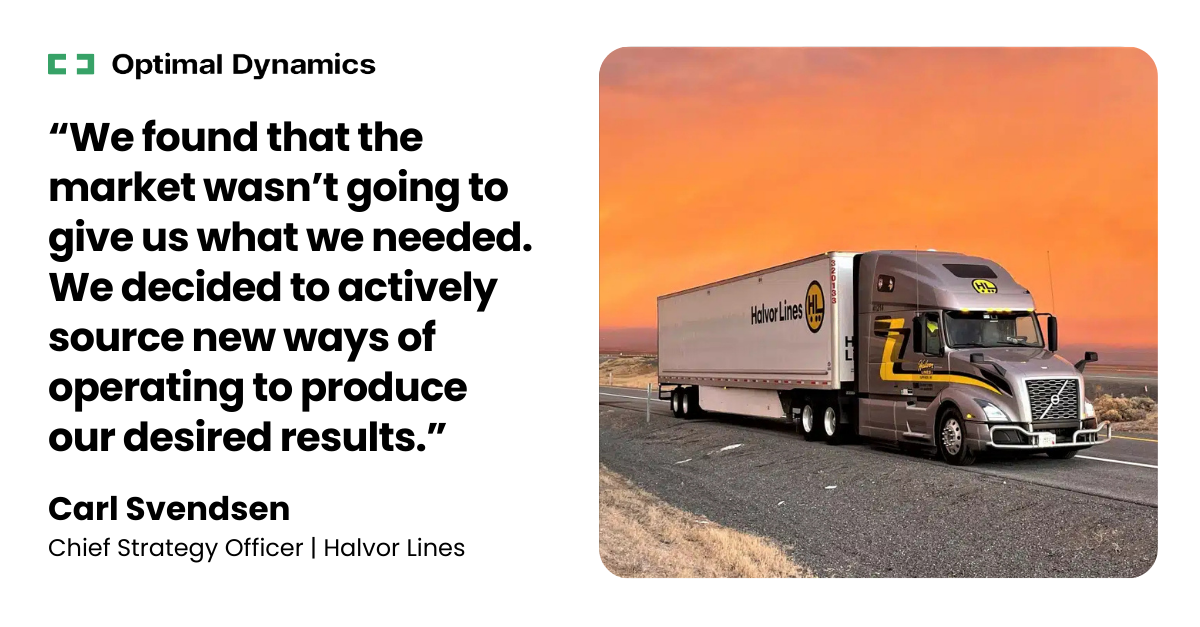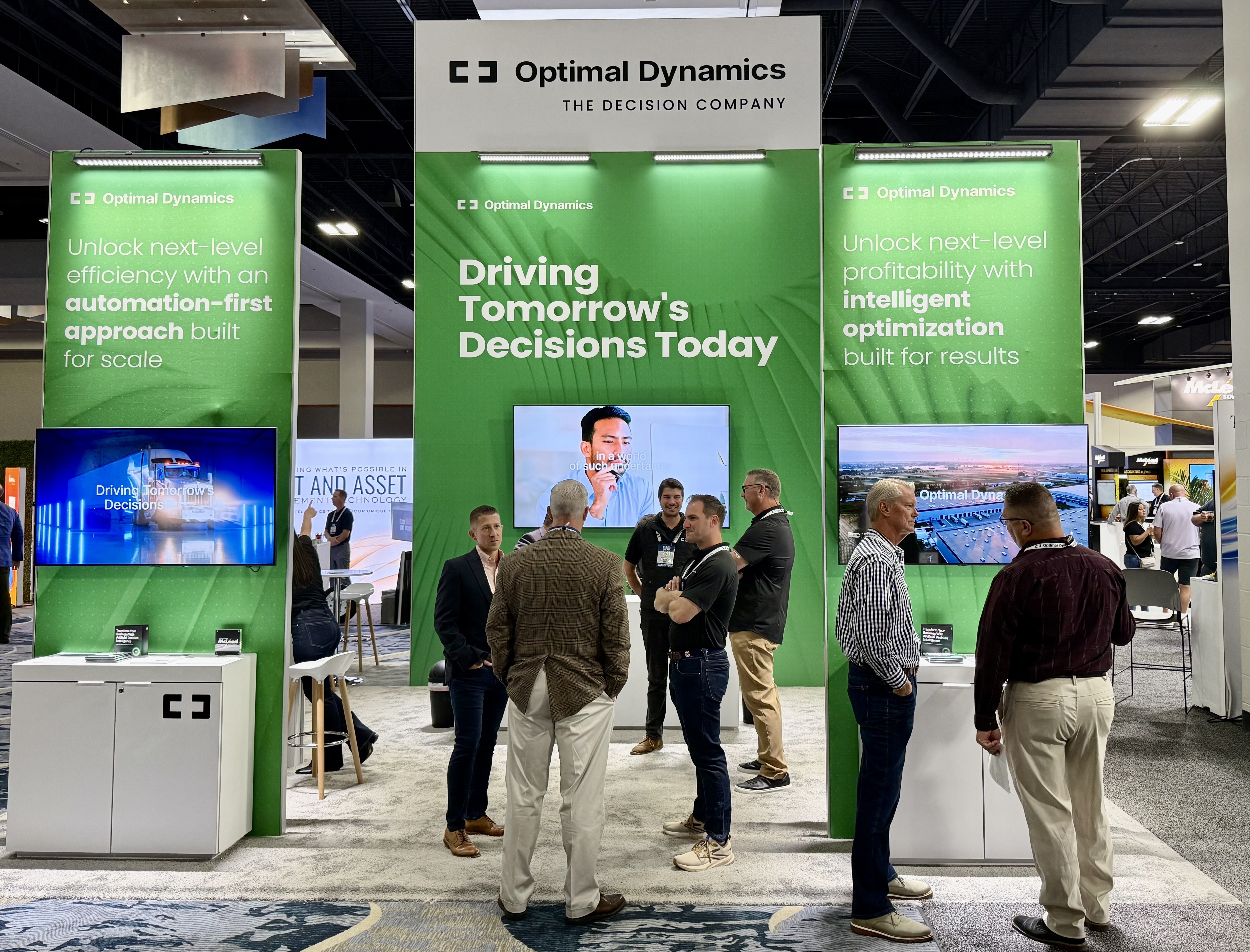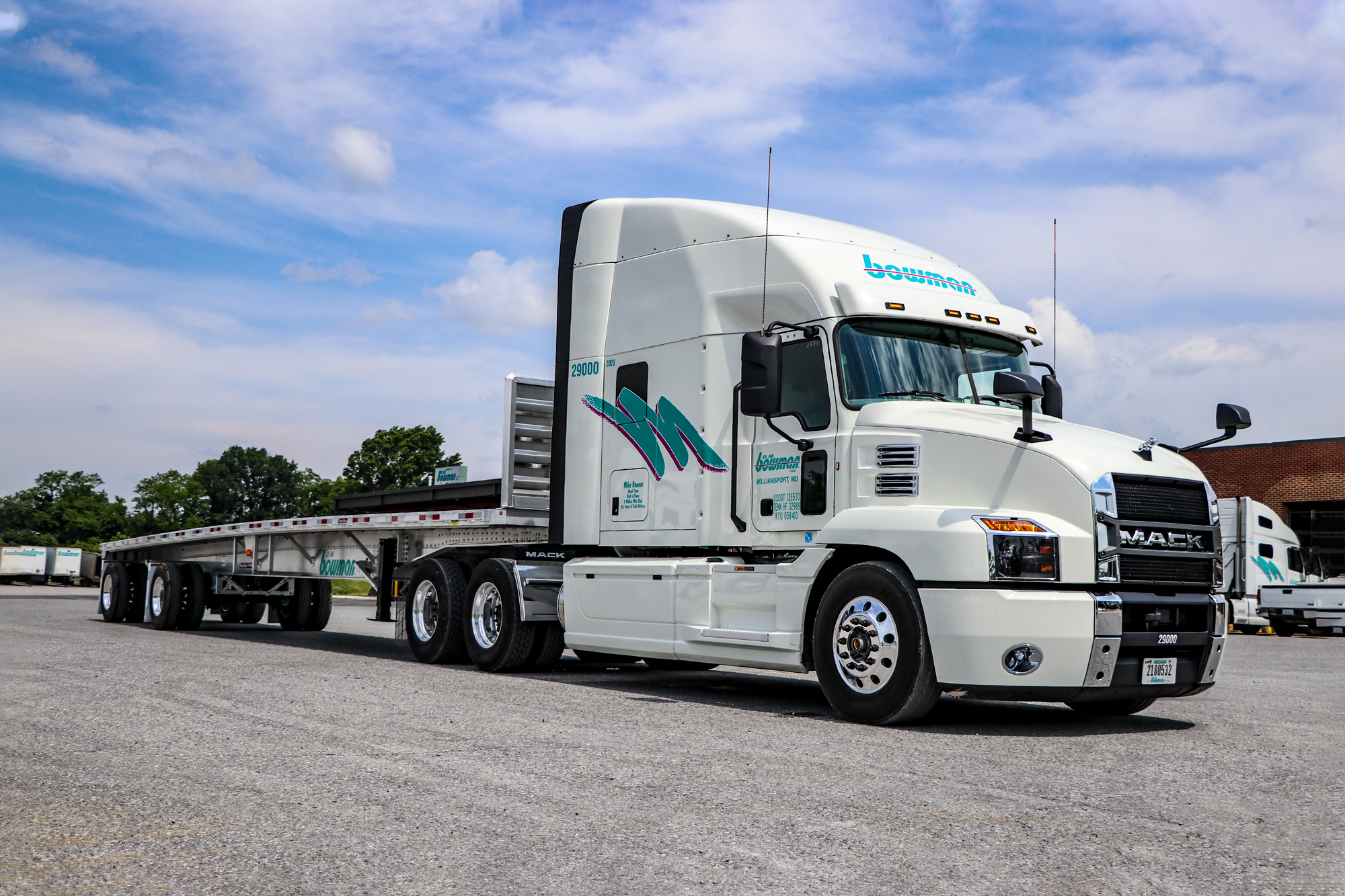Adapting to a Tough Market: Optimal Dynamics at McLeod Software User Conference 2025
The McLeod Software User Conference 2025 brought together some of the most influential minds in trucking at a moment when the industry is under immense pressure. Margins are razor-thin, fleets are contending with excess capacity, and shippers are taking a more cautious stance on freight spend.
Amid this challenging backdrop, one theme stood out: resilience. Fleets aren’t waiting for the market to rebound — they’re leaning into new strategies, forging stronger partnerships, and embracing technologies that help them adapt faster and plan smarter.
For Optimal Dynamics, the conference was a chance to highlight how decision automation is helping carriers do exactly that: stay ahead in a tough market by turning complexity into opportunity.
Facing Today’s Freight Market Head-On
Halvor Lines is among the enterprise carriers that use Optimal Dynamics and McLeod in tandem. Today’s challenging freight market was one of the primary drivers of the organization’s decision to adopt decision automation. As Carl Svendsen, Chief Strategy Officer at Halvor Lines, put it:
“We found that the market wasn’t going to give us what we needed. We decided to actively source new ways of operating to produce our desired results.”
That sentiment captures the reality for many fleets today. The market isn’t offering easy wins. Excess capacity, volatile demand, and pressure on margins mean carriers must take a proactive approach to reshaping their operations.
Challenging conditions are also driving innovation. Carriers are rethinking their business models, exploring new technology, and leaning on partners who can help them unlock efficiency and resilience.
At Optimal Dynamics, we believe transformation doesn’t come from technology alone. It’s about bringing together the right strategy, the right partners, and the right execution. Decision automation can provide the foundation, but true results come when leadership aligns on goals, integrates technology seamlessly into daily operations, and treats transformation as an ongoing journey rather than a one-time fix.

The Role of Partnerships and Ecosystems
For today’s fleets, siloed technology is no longer enough. They need ecosystems where data, platforms, and partners work together to drive better outcomes.

That vision is at the heart of McLeod Software’s partner-driven model, and it’s why Optimal Dynamics fits so easily into McLeod’s ecosystem. Optimal Dynamics connects directly into a carrier’s existing stack (from TMS to ELD) and elevates the value of that data by automating the real-world decisions that matter most.
That’s why our Decision Automation Platform is able to serve as the “decision layer” of logistics. By leveraging existing systems and data, it transforms raw information into actionable insights, helping fleets optimize networks, improve profitability, and increase service coverage.
Carriers need partners who understand their business, align with their goals, and collaborate closely to achieve measurable results. That’s the foundation for building more resilient, future-ready networks.
Proof of Value in Action: The L.J. Rogers Story
One of the highlights of the event was the joint session between Chris Partain, VP of Administration at L.J. Rogers, and Ben Marks, Senior Director of Solutions Sales Engineering at Optimal Dynamics. The session was called “AI in Action: A Live Freight Network Optimization.”
For L.J. Rogers, a family-owned carrier based in North Carolina, the objectives were clear: improve profitability, enhance driver satisfaction, and strengthen overall network efficiency. To achieve these goals, they turned to Optimal Dynamics for a Proof of Value (POV) exercise.
The process was straightforward but powerful:
- Data gathering: Running three months of real-world data through the OD decision engine.
- Calibration: Fine-tuning the model to reflect actual operating conditions and constraints.
- Scenario modeling: Exploring alternative strategies and their impact on revenue, profit, and service coverage.
The POV results spoke volumes. Profitability increased by more than $165,000 per month once L.J. Rogers’ network was simulated, fine-tuned, and adjusted to reflect the decisions that our optimization engine would have recommended. Service coverage remained strong, and the carrier gained the ability to model new strategies with confidence.
For many fleets, this is the “aha” moment: when they see how decision automation translates directly to financial and operational gains. Even in today’s tough market, automation can help carriers build networks that are both more profitable and more resilient.
Transformation Beyond Buzzwords
“Transformation” is one of those words that gets used often in trucking — but at the McLeod Software User Conference, customers showed what it really looks like in practice.
With decision automation, fleets are going beyond fine-tuning day-to-day operations by fundamentally rethinking how they:
- Size their fleets to match market conditions and long-term strategy.
- Allocate loads between asset and brokerage to maximize profitability.
- Balance utilization and service coverage to keep customers satisfied while protecting margins.
These shifts don’t happen overnight. They require strong leadership, disciplined change management, and a partner ecosystem that enables speed-to-value. Carriers that adopt this approach are transforming their operations.
Building What’s Next in Trucking
In a market where every decision matters, leading fleets are proving that making progress on the path ahead requires taking action. Through implementing new technologies, building ecosystem partnerships, and achieving real-world results, carriers are finding new ways to stay ahead.
We’re grateful to McLeod Software for hosting an incredible conference and to the many customers and partners who joined us in Denver to share ideas, challenges, and successes.
If you’re ready to see how Optimal Dynamics integrates with McLeod to deliver smarter, faster, and more profitable decisions, schedule a demo.






.png)
